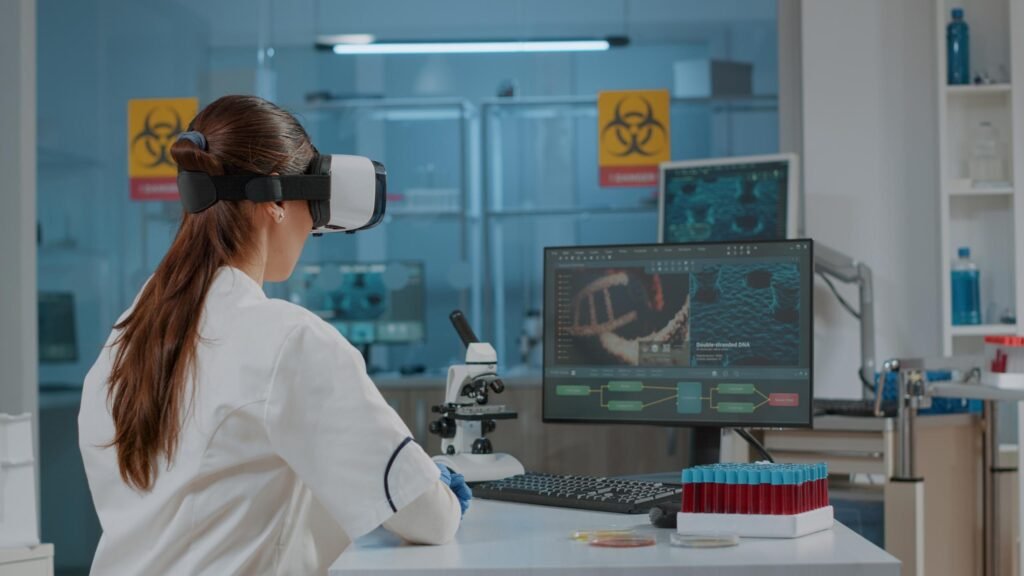
Virtual Reality For Healthcare Industry 2025
In the ever-evolving landscape of healthcare, Virtual Reality for health care is emerging as a groundbreaking technology with the potential to reshape the way we approach treatment, training, and patient care. Virtual reality for healthcare becoming a vital tool in the medical field. In this article, we’ll dive deep into the intriguing realm of Virtual Reality in healthcare and explore its profound impact on the industry.
Unleashing the Potential of Virtual Reality For Healthcare
Virtual Reality is a technology that immerses users in computer-generated environments, providing a sensory-rich and interactive experience. Within healthcare, VR is being harnessed in diverse ways, revolutionizing patient care, medical training, and therapy.
Advantages of Virtual Reality in Healthcare
-
- Pain Management: Virtual Reality for health care proving to be a highly effective tool for pain distraction and management during medical procedures, reducing the reliance on traditional pain relief methods.
- Medical Training: Healthcare professionals can now practice complex procedures in a risk-free virtual environment, honing their skills and building confidence.
- Therapeutic Interventions: VR therapy is making strides in treating conditions like post-traumatic stress disorder (PTSD), phobias, and anxiety by exposing patients to controlled, therapeutic virtual scenarios.
- Rehabilitation: VR-based physical therapy and rehabilitation programs are helping patients regain mobility and strength while making the process engaging and enjoyable.
- Remote Consultations: VR facilitates remote medical consultations and even telesurgery, enabling specialists to provide critical assistance during surgical procedures from a distance.
Applications of Virtual Reality For Healthcare
-
- Surgical Simulations: Surgeons can engage in realistic VR surgical simulations to practice and refine their skills, ensuring peak performance during actual surgeries.
- Patient Education: VR empowers patients by offering immersive educational experiences that help them understand their medical conditions and treatment options more comprehensively.
- Pain Reduction: Patients undergoing painful procedures can don VR headsets to immerse themselves in soothing virtual environments, which effectively reduces anxiety and pain perception.
- Exposure Therapy: VR is proving invaluable for gradually exposing patients to their phobias or traumatic experiences within a controlled and safe virtual environment, facilitating desensitization.
- Neurorehabilitation: VR-based therapies are targeting motor and cognitive functions, benefiting stroke patients and individuals with various neurological conditions.
Conclusion
Virtual Reality for healthcare is making significant strides in the healthcare industry, enhancing patient care, medical training, and therapeutic interventions. As technology continues to advance, the potential applications of VR in healthcare are vast. Whether you’re a healthcare provider seeking innovative ways to enhance patient outcomes, a medical student refining your skills, or a patient on the path to recovery, Virtual Reality is opening new horizons in healthcare. Embrace this technological revolution and step into a world where healing transcends conventional boundaries. The future of healthcare has arrived, and it holds promising opportunities for improved well-being and medical advancements.
